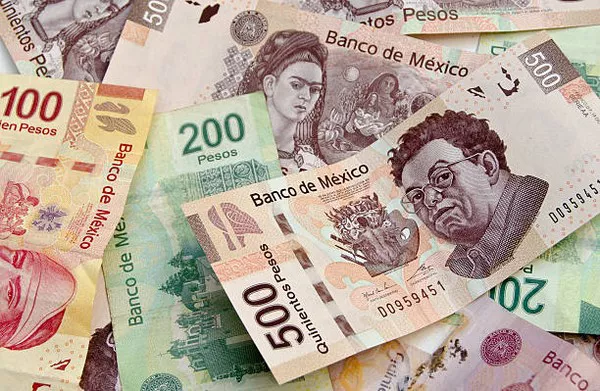The allure of exploring vibrant cultures, picturesque landscapes, and unique experiences often leads travelers to destinations like Cuba. However, before embarking on such journeys, it is essential to understand the local currency dynamics to ensure a smooth and hassle-free experience. In this article, we will explore the question: Can you use Mexican Pesos in Cuba? Delving into the intricacies of currency exchange, we aim to provide travelers with valuable insights to enhance their financial preparedness for a visit to the Caribbean island.
Understanding Currency in Cuba:
Dual Currency System:
Cuba operates on a dual currency system, involving two distinct currencies – the Cuban Convertible Peso (CUC) and the Cuban Peso (CUP). The CUC is pegged to the U.S. Dollar and is primarily used by tourists for transactions in the tourism sector, while the CUP is used by locals for everyday transactions.
Exclusivity of the Cuban Convertible Peso (CUC):
The Cuban Convertible Peso (CUC) is the more widely accepted currency for tourists. It is used in hotels, restaurants, and other establishments catering to international visitors. The CUC is designed to facilitate a simplified experience for tourists and is pegged at a 1:1 ratio with the U.S. Dollar.
Mexican Pesos in Cuba:
Limited Acceptance of Foreign Currencies:
While some tourist-oriented establishments in Cuba may accept major foreign currencies, including the Euro and the U.S. Dollar, the acceptance of Mexican Pesos is generally limited. The primary reason for this is the prevalence of the Cuban Convertible Peso (CUC) in the tourism sector.
Currency Exchange Facilities:
To engage in transactions in Cuba, it is advisable to exchange your Mexican Pesos for Cuban Convertible Pesos (CUC) upon arrival. Currency exchange facilities are available at airports, hotels, banks, and official currency exchange offices (CADECA). Exchanging your Mexican Peso for CUC ensures that you have the local currency widely accepted in tourist-centric areas.
Currency Exchange Process in Cuba:
Official Exchange Rates:
The official exchange rates are set by the Cuban government. When exchanging Mexican Pesos for Cuban Convertible Pesos (CUC), it is essential to be aware of the prevailing exchange rate to ensure you receive a fair value for your currency. Exchange rates may vary slightly between different institutions, but they generally adhere to the government’s guidelines.
Currency Exchange Facilities:
Currency exchange facilities, known as CADECAs, are widespread in tourist areas and major cities in Cuba. These establishments offer a convenient and secure means of exchanging foreign currencies for CUC. It is advisable to use official exchange facilities to avoid potential scams or receiving counterfeit currency.
Hotel Exchange Services:
Many hotels in Cuba also offer currency exchange services for their guests. While this option provides convenience, the exchange rates at hotels might be slightly less favorable compared to dedicated currency exchange offices. It is recommended to compare rates before deciding where to exchange your Mexican Pesos.
Practical Tips for Currency Management in Cuba:
Diversify Your Currency:
Given the limited acceptance of some foreign currencies in Cuba, it is advisable to diversify your currency holdings. While the U.S. Dollar and Euro are widely accepted, having some Cuban Convertible Pesos (CUC) on hand for smaller transactions and tips is practical.
Use Credit and Debit Cards Wisely:
Credit and debit cards issued by international banks are increasingly accepted in Cuba. However, it is essential to inform your bank about your travel plans to avoid any issues with card usage. Keep in mind that some establishments may prefer cash, especially in more remote areas.
Check Exchange Rates Regularly:
Exchange rates can fluctuate, and it’s prudent to check them regularly, especially if you plan to exchange a significant amount of currency. Online currency converters and financial news platforms can provide real-time exchange rate information.
Bring U.S. Dollars or Euros as Alternatives:
While Mexican Pesos might have limited acceptance, U.S. Dollars and Euros are widely recognized in tourist areas. Consider bringing these currencies as alternatives to ensure flexibility in your financial transactions.
Cultural and Practical Considerations:
Understanding Local Practices:
Familiarize yourself with local practices and customs regarding tipping and payments. Having a mix of Cuban Convertible Pesos (CUC) and smaller denominations for tips can enhance your interactions with locals.
Respect for Local Currency:
While some establishments may accept foreign currencies, it is a sign of respect for the local economy to use the official currency. By exchanging your Mexican Pesos for Cuban Convertible Pesos (CUC), you contribute to the stability of the local financial system.
Engaging with Locals:
Engaging with locals and learning about their currency practices can provide valuable insights into Cuban culture. Many Cubans use the Cuban Peso (CUP) for their daily transactions, and understanding this distinction adds depth to your cultural experience.
See Also: MXN Currency: History, Symbol, Codes & Denominations
Conclusion:
While the use of Mexican Pesos in Cuba is generally limited, travelers can navigate the currency landscape effectively by exchanging their currency for Cuban Convertible Pesos (CUC) upon arrival. Understanding the dual currency system, being aware of official exchange rates, and utilizing authorized currency exchange facilities are key to a seamless financial experience in Cuba.
As a traveler, embracing the local currency enhances your ability to explore the diverse offerings of Cuba, from its historical sites to its vibrant street life. By adopting a practical approach to currency management and respecting local practices, you can make the most of your visit to this captivating Caribbean island.


